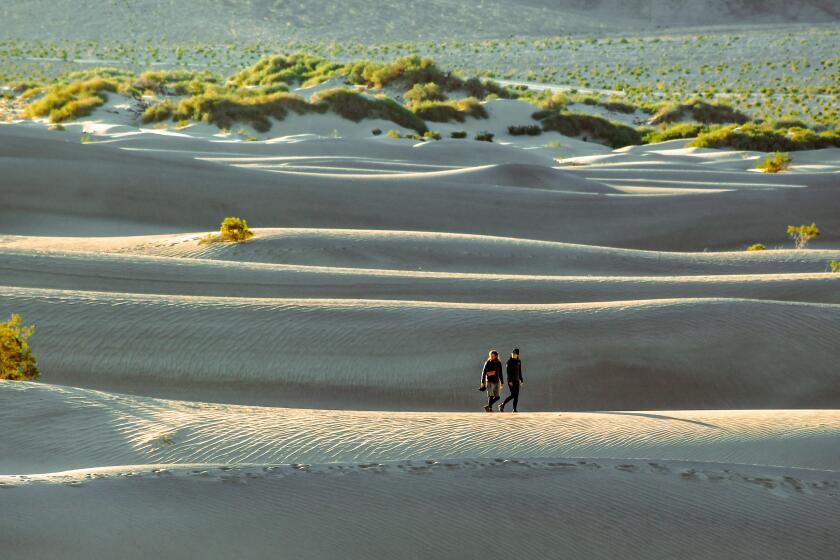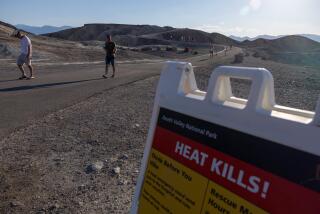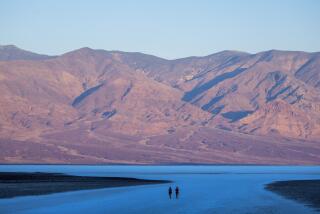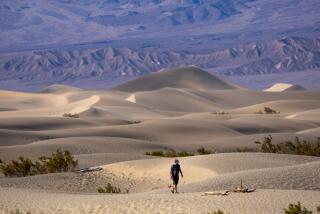Love-seeking tarantula causes crash in Death Valley; motorcyclist is hospitalized
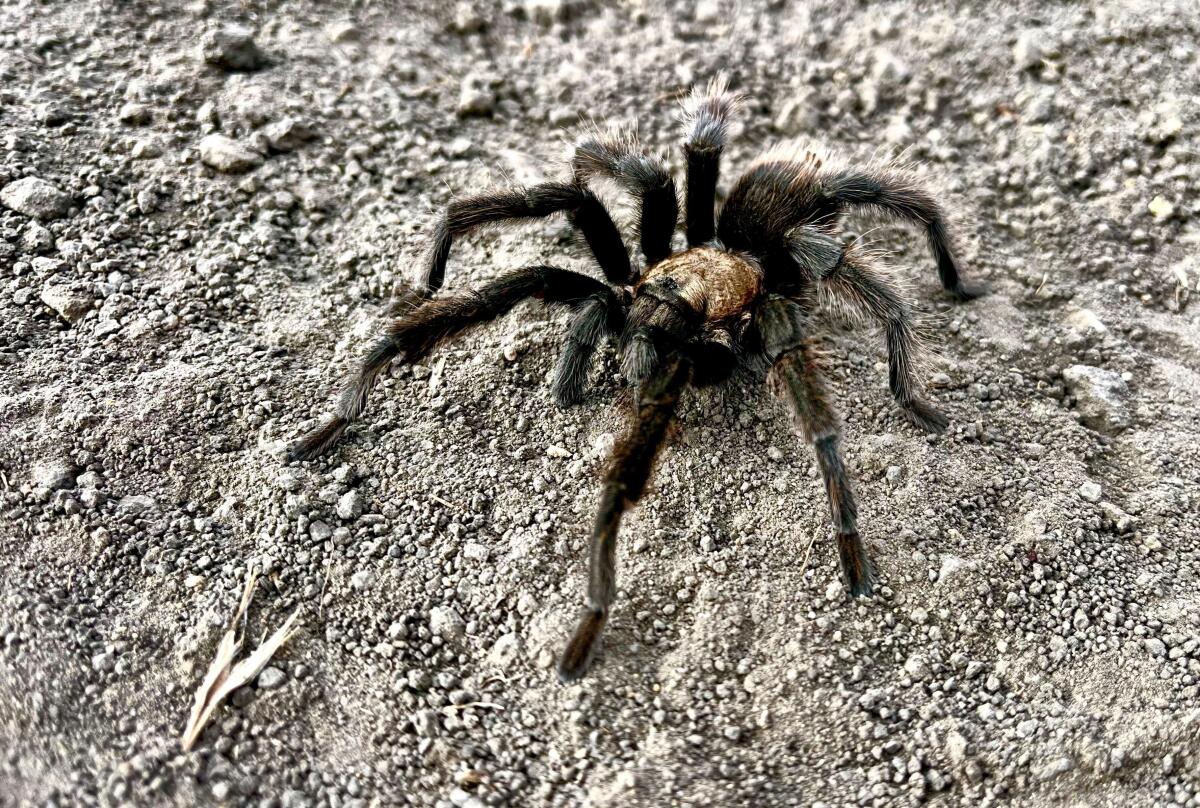
Desert tarantulas aren’t considered poisonous to humans. That doesn’t mean, however, that they can’t be dangerous.
A trio of international travelers learned this lesson over the weekend when the brown, hairy spider’s appearance caused a two-vehicle accident in Death Valley National Park that sent one man to the hospital.
A Canadian motorcyclist crashed Saturday afternoon into the back of a camper rented by a Swiss couple who suddenly stopped in the middle of the road to provide safe passage for a desert tarantula crawling across the highway, according to national park officials.
The Swiss tourists “were fine,” according to park spokesperson Abby Wines, but the biker was transported via ambulance, roughly 100 miles, to Desert View Hospital in Pahrump, Nev.
Wines said his injuries “were non-life-threatening,” but no update on the man’s condition was available.
California has some of the highest diversity of spiders in the world, yet climate change and habitat encroachment are killing them.
The spider, according to park officials, “walked away unscathed.”
Seeing a tarantula above ground is unusual. Park officials said the spider spends most of its time underground. Fall happens to be the one season 8- to 10-year-old male tarantulas leave “their burrows to search for a mate.”
Female tarantulas are more deadly for males than any wayward car or motorcycle: The females often kill and eat males after mating.
Park officials described the eight-legged creature, both male and female, as “slow moving and nonaggressive” and said their nonpoisonous bite is “similar to a bee sting.”
The accident took place along the two-lane California State Route 190 near Towne Pass, which provides western access to the national park.
Two months after a storm that dropped a year’s rainfall in a single day, visitors to the national park are encountering a a strange place made stranger — and more majestic.
“Please drive slowly, especially going down steep hills in the park,” said Mike Reynolds, superintendent of Death Valley National Park, in a statement.
Reynolds was the first park employee to survey the accident scene.
“Our roads still have gravel patches due to flood damage, and wildlife of all sizes are out,” he said.
Part of the state route that was closed due to flooding was reopened on Oct. 15, while other parts of the park and adjacent roadways are still closed.
More to Read
Sign up for Essential California
The most important California stories and recommendations in your inbox every morning.
You may occasionally receive promotional content from the Los Angeles Times.

